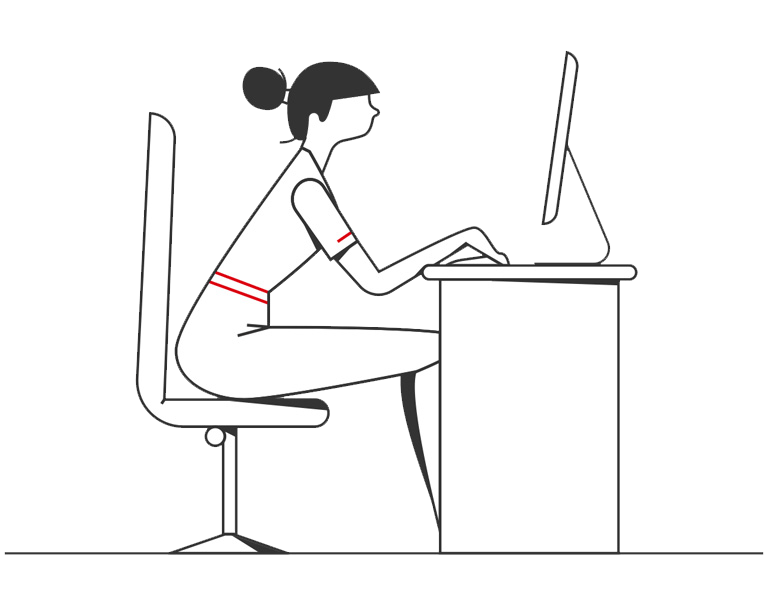- Article

- Optimising Sales
- Seeking New Opportunities
Reimagining the Buyer Shopping Experience
Retailers are paving the way for highly personalized brand experiences.
As online shopping becomes increasingly more attractive to modern consumers, retail brands are having to rethink their in-store setups to compete for attention and sales. Where some stores are leaning towards virtual reality, robotics and other new technologies to enhance the buying experience, others are turning to wellness and social environments, transforming the retail spaces into fitness studios, coffee houses and day spas.
To help us better understand this move towards customized, bespoke experiences, we asked two retail brands that are blazing the way to share their strategies with us.
MM.LaFleur, a fashion brand designed for today’s working woman, offers a unique buying experience – no products are displayed in their stores. Instead, they offer personalized styling sessions, crafting a clothing kit – or “bento box” – of products that best suit their customer’s lifestyle and tastes. Fellow apparel disruptor Seismic is also shaking up the classic in-store model by creating retail popup experiences inside major big box stores, reimagining them as innovation studios.
Showcasing the Future
Seismic’s performance apparel is powered by a seamless, practically invisible inner layer of robotics that syncs with the wearer’s body, offering added strength and recuperation in motion. Creating a retail environment that tells Seismic’s one-of-a-kind story while demonstrating the built-in technology is a two-fold challenge. Sarah Thomas, Seismic’s Vice President of Product, wished to create a space with wellness in mind. “We wanted to create an emotional connection to the garments and how they pair with the customer’s own body and movements.” VIP events, personal goal setting and behavior analysis all play a part in how the brand customizes itself around the customer to empower them.
Chris Gadway, Seismic’s Vice President of Design, began with the question: “How do you project the vision of the brand to all retail locations.” His creative team operates much like a research and development lab, comprised of diverse skill sets drawn from every side of the fitness industry, and beyond. “We’re always looking at how to prepare the brand towards its next stage of growth,” says Gadway.
Directing the Consumer
When Sarah LaFleur, CEO and Founder of MM.LaFleur, launched her brand’s first manifestation, a pop-up serving up simple, stylish fashions for working women, she thought it would be an obvious, and instant success. The reality: “It was crickets.”
Born out of LaFleur’s own confusion over what looks suited her best professionally, she created MM.LaFleur to empower women to make the right styling decisions for their lifestyles. What she didn’t realize was that that decision itself was her customer’s key obstacle.
LaFleur recognized that the professional women she was targeting didn’t want to have to make another decision in their day. So LaFleur flipped the model, creating “bento boxes” of recommended outfits based on customer’s tastes, lifestyles, etc. That a-ha moment resulted in a complete transformation in the way the brand does business. Customers now see MM.LaFleur as a brand that gets who they are – and as a champion for their success.
Choosing Your Partners
“We knew we needed the right partners to make Seismic successful” says Sarah Thomas. That meant looking beyond the average fitness consumer.
Seismic broadened its scope, thinking about the larger workforce, in all of its manifestations, that could benefit from powered performance clothing for rigorous tasks. Eventually they partnered with Cintas, one of the nation’s largest uniform companies – a full service operation that provides uniform rentals, laundering services, distribution, drivers and a deep logistical understanding of the complexities of the human workforce.
Not only does the partnership with Cintas open up a huge revenue potential, it also allows Seismic the flexibility to scale by taking advantage of Cintas’s established network and infrastructure.
Reverse Engineering Success
Sarah LaFleur says her company’s “secret sauce” is putting her design team in front of real customers.
She challenges her team to create women’s apparel to be worn for a 10-hour day. Garments need to be wrinkle resistant to accommodate women traveling for work that may need to step off a plane and head straight to a client. She demands that they be machine washable (as it’s expensive to maintain dry clean-only clothes) and rethink basic pieces like the women’s blazer, which is really just a stiff, tighter version of a men’s blazer. Thus was born the “jardigan” – a piece that presents like a jacket but has the comfort-factor of a cardigan.
MM.LaFleur is continually honing its understanding of their consumer on an individual level. The brand’s the ability to see the way their customers live and work help them determine what garments will to boost their clients’ confidence—and, ultimately, their success.




